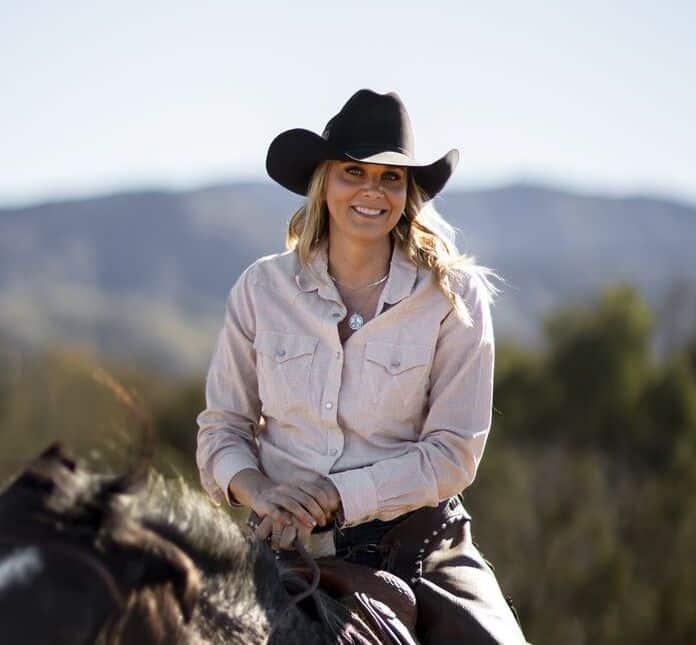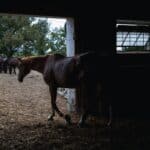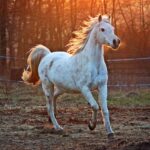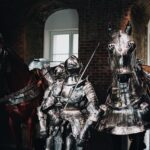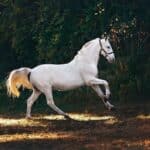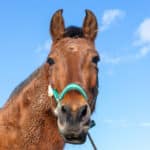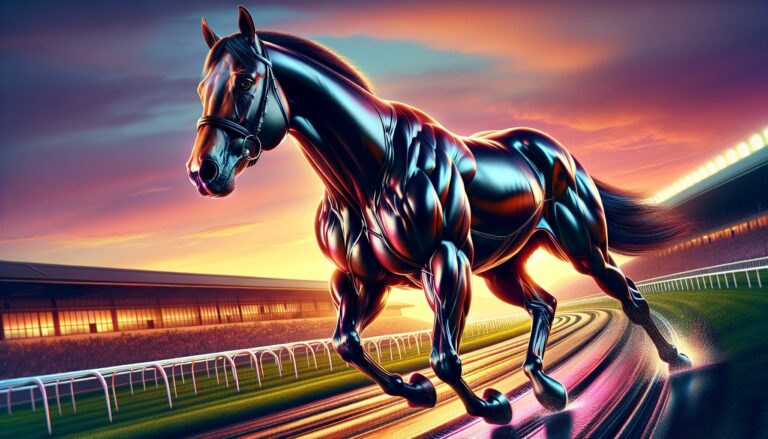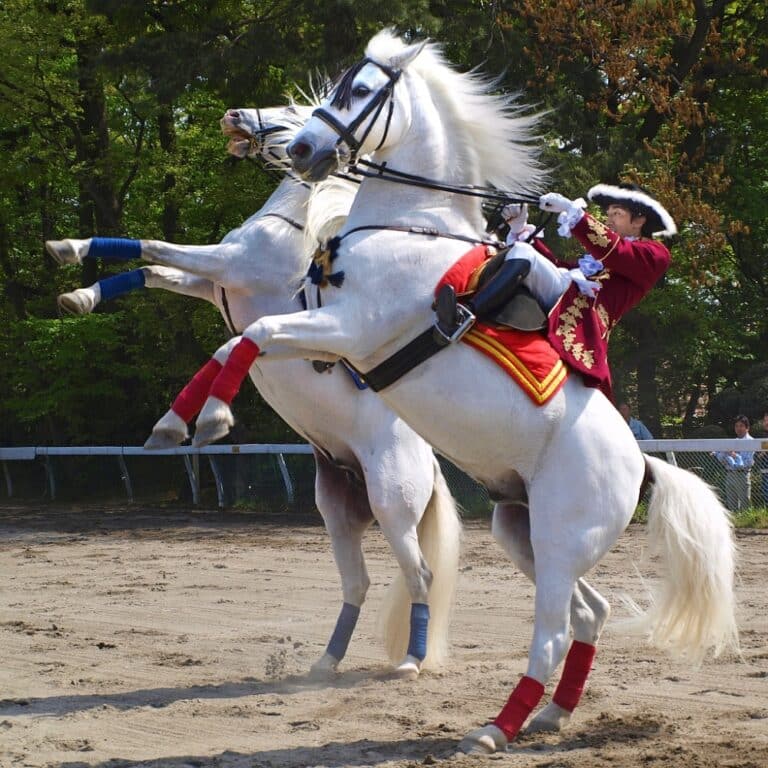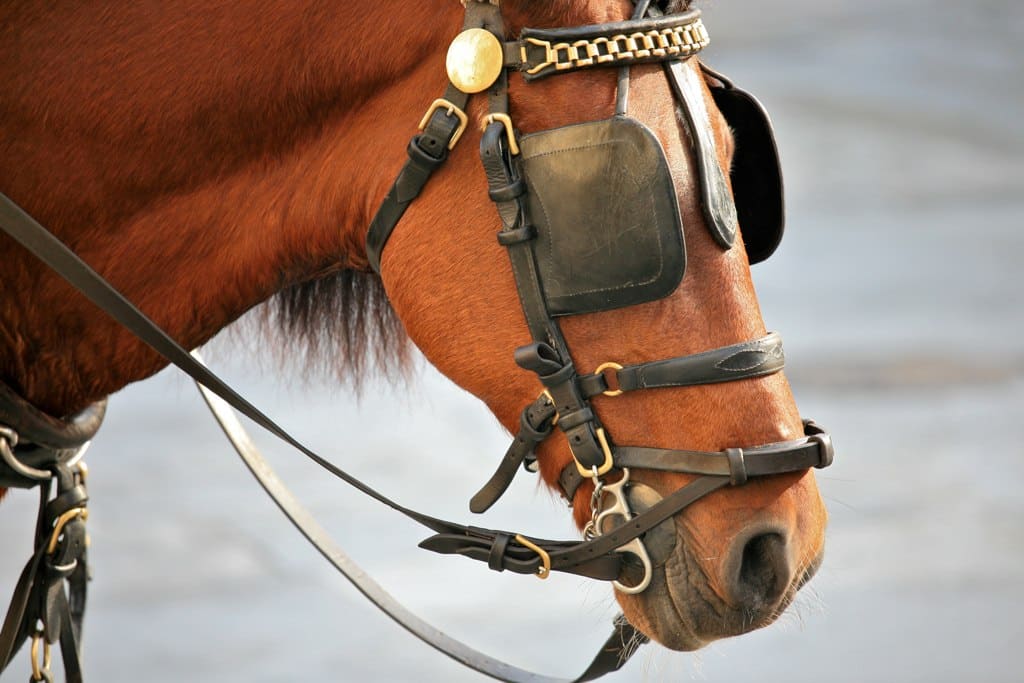
Horse owners often cover their horses’ eyes for a variety of practical reasons. With the right mask or hood, this isn’t just done as an aesthetic choice. It’s essential to ensure the comfort and safety of these majestic animals. This blog post will explain why covering horses’ eyes is so important and discuss different types of eye protection available while also exploring its history, fitting instructions, and precautions to be taken – all with the goal in mind of answering: “Why do they cover horses’ eyes?” So let us join together on our exciting exploration into equine eyewear!
Key Takeaways
- Covering horses’ eyes provides protection from injury, sun damage, and irritation, as well as enhancing focus during training and competitions.
- Fly masks protect against insects, debris, and UV rays. Blinkers/blinders limit peripheral vision to reduce distractions.
- Consider the unique needs of a horse when deciding on eye coverings & monitor for potential issues to ensure their comfort & safety.
The Purpose of Covering Horses’ Eyes
Eye coverings for horses serve a range of purposes, namely protection and boosting focus while soothing stress. They keep out bugs that may cause harm or irritation to the horse’s eyes which are more at risk if they possess light-colored irises or pink skin around them. Protecting the equine with eye covers can make their life far better by providing comfort from constant disturbances such as insects and other objects in the environment.
These eye defenses provide reliable safeguarding against scratches and bites in vulnerable areas like their vision. Thus improving the overall well-being of any horse involved!
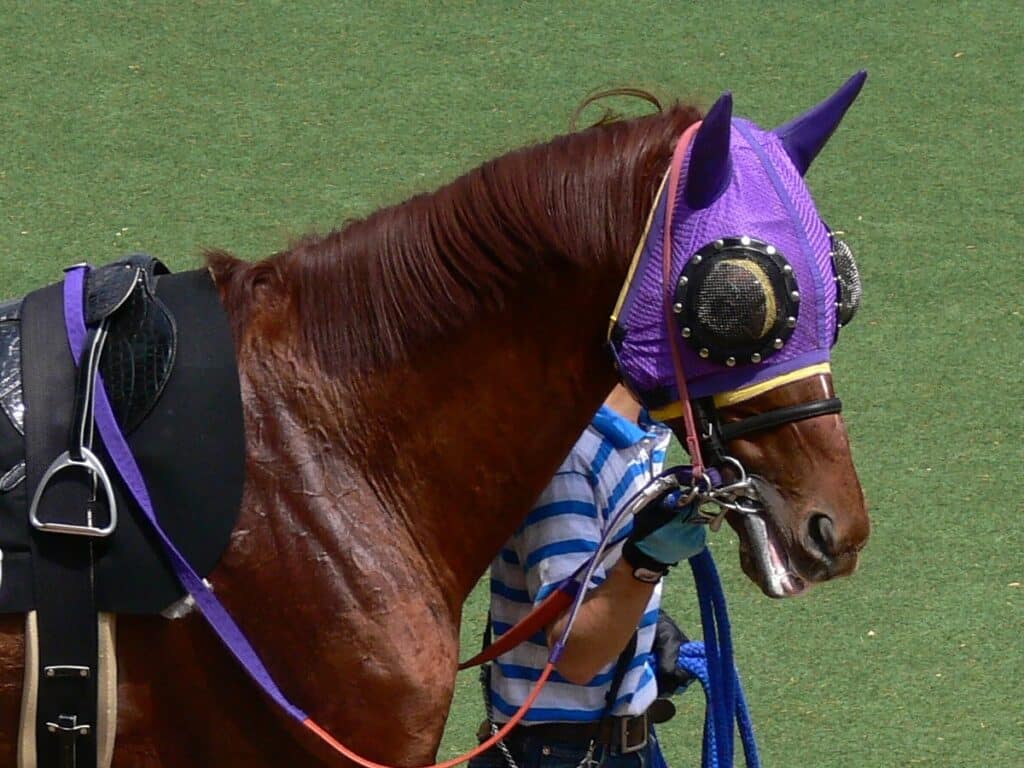
Protection from Insects and Debris
Fly masks are designed to provide eye coverings for horses in order to protect them from the irritation of pests like insects, debris, and UV rays. They have fine mesh material that allows animals with light-colored eyes or pink skin extra protection due to their greater risk of sun damage. These fly masks can help reduce potential cases of illnesses transmitted by flying bugs as well as keep diseases away from delicate parts such as around the eyes and ears. Not only do they work at shielding sensitive spots on a horse’s body but also allow them freedom while partaking in outdoor activities without feeling constantly pestered throughout those times spent outdoors.
Enhancing Focus During Training and Competitions
Covering the eyes of horses can be useful in helping them stay focused when training or competing. Blinkers and blinders are especially helpful, as they restrict a horse’s vision to only what is directly ahead of it while removing peripheral distractions from other animals and environmental stimuli. These eye coverings have proven vital for trainers and handlers so that their charges perform optimally when necessary. Carriage driving also employs such techniques on these carriage horses since this blocking-out activity helps maintain focus in otherwise stressful situations by limiting erratic reactions caused by outside factors.
Calming Effects for Anxious Horses
A horse’s owner should take note of their equine companion’s facial expressions to ensure the animal is experiencing calmness and comfort. Applying eye coverings during times of distress, like travel or vet appointments, for instance, can be a great way to reduce tension in horses. Some will become more nervous as opposed to others who may find it relaxing. It is important That owners understand how their own horse responds when dealing with eye covering so they are not causing additional stress upon them. Ultimately covering a horse’s eyes could result in an overall decrease in anxious behaviour from both handler and steed alike if done properly
Types of Horse Eye Coverings
For horses, there are numerous eye coverings available to meet specific needs. Fly masks offer protection from bugs and debris, blinkers help narrow the field of vision for training or competition purposes, while specialized covers can protect against UV rays and also provide additional cushioning around sensitive eyes. To ensure you choose the right option for your horse it is important to familiarize yourself with all types of protective eyewear that exist.
Fly Masks come in many styles, shapes, sizes, and colors – they fit snugly over a horse’s face yet leave its ears exposed allowing them greater comfort during use but also serving as an effective deterrent against flies which could otherwise pester them whilst outdoors. Blinkers are made specifically to focus on enhancement purposes assisting riders to keep their mounts on track whether involved in serious competitions or even casual rides out on trails/local parks etc by limiting peripheral awareness. Whereas specially designed covering options take into account exposure levels ensuring safer journeys out under direct sunlight – always keeping those notoriously light-sensitive equine pupils safe & healthy.
Finally one mustn’t forget about using tailored wrap-around designs intended for extra padding where necessary, enabling more security without weighing down too heavily such delicate areas surrounding any given animal’s head area either!

Fly Masks
Fly masks are made of a fine, transparent mesh and serve to protect horses from flying insects, debris, and sunlight without blocking their view. This mask not only provides necessary protection but also guards against eye infections as well as diseases transmitted by the bugs buzzing around its ears.
With such an instrument on your horse’s head, they can go outside in complete comfort knowing that no pesky fly will bother them. Thus contributing significantly to their overall healthiness while allowing for leisurely outdoor activities.
Blinkers and Blinders
Horses’ concentration and performance can be improved by limiting their field of view with the use of specialized eye coverings. Such blinders or blinkers, typically made out of leather or plastic cups, are worn over the horses’ eyes in order to narrow down their peripheral vision during competitions and training sessions alike.
These devices have become indispensable for trainers striving to ensure that their equines perform optimally under any circumstances. Thus providing them invaluable support when it matters most.
Specialized Eye Protection
Horse owners should be sure to protect their horses with the right eye coverings, such as goggles for racing or masks that block out UV rays. Goggles are particularly helpful when it comes to keeping a horse’s eyes safe from any flying mud and debris while participating in races, whereas the mask will shield those sensitive to sunlight from potential harm caused by ultraviolet radiation. Such specialized equipment is designed specifically for each individual case so as to give optimal protection tailored just for them.
Proper Use and Fitting of Horse Eye Coverings
It is important to introduce your horse gradually to eye coverings so that they can trust and be comfortable with them. Correctly fitted eye protection will also help avoid any potential harm, as well as make sure the job gets done properly.
Below we will look at practical advice on how best to begin introducing your equine friend and guarantee its proper fit for optimum comfortability while wearing its eyewear.
Understanding a horse’s endurance and how eye coverings can facilitate better performance is crucial. Learn more about a horse’s endurance in our blog on how long a horse can run.
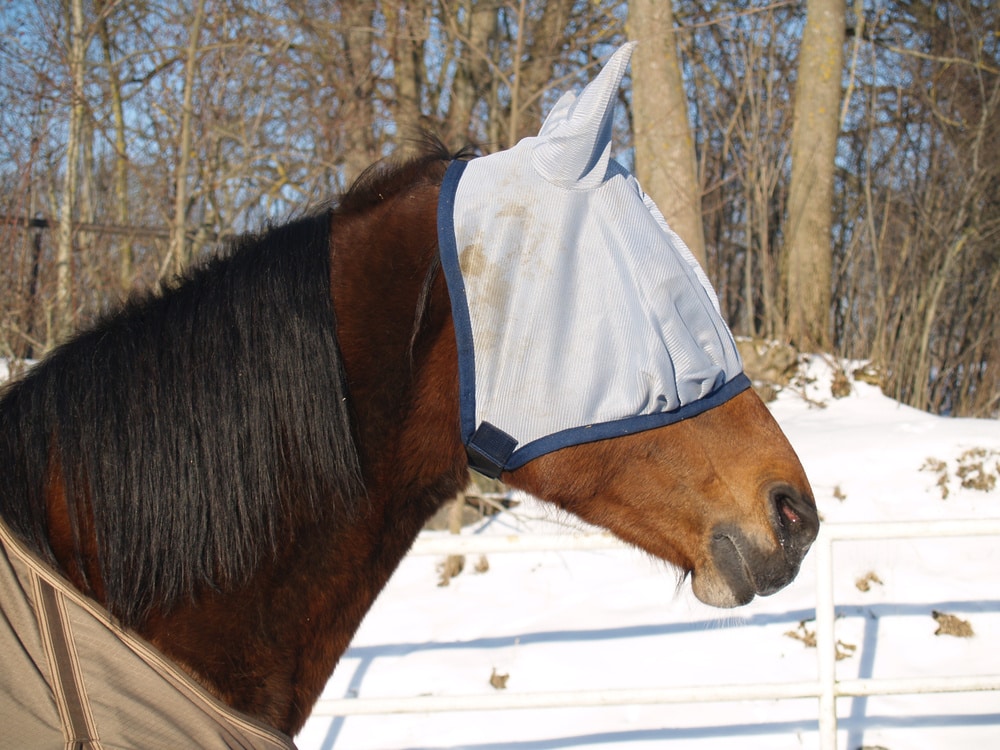
Introducing Your Horse to Eye Coverings
It is essential to be mindful and take a gradual approach when introducing eye coverings for your horse in order to foster trust. Utilizing positive reinforcement, such as treats, whenever the animal allows it can help build familiarity. First, make sure you are working within a familiar environment that encourages comfortability. Then increase how long your horse wears it while continuously rewarding them with rewards every time they do so without resistance. Doing this will create an even better bond between owner and pet by making positive connections that ensure both safety and well-being.
Correctly Fitting a Fly Mask or Blinker
For horse owners, making sure that eye coverings fit well is a top priority for comfort and safety. The mask should lay smoothly against the face and be adjusted so it fits snugly but not too tightly, enough to slip one finger in between the materials easily. Manufacturers often provide sizing charts according to bridle size as a guide when selecting an appropriate eye covering for your horse. If uncertain of what would work best though, seeking out advice from other experienced equestrians or professional help might also prove beneficial towards achieving ideal fitment on your four-legged companion’s gear!
The History and Evolution of Horse Eye Coverings
The history and evolution of horse eye coverings, from their beginnings in the battlefields of ancient Egypt and Greece to modern adaptations used for various equine sports activities, is an intriguing one. In particular, chariot racing was a major application early on. Today these protective measures have been adapted to provide focus enhancement as well as protection across many different disciplines. Horse eye coverings are still utilized widely due to their long-standing presence within cultures worldwide — providing safety while maximizing performance potential

From Battlefields to Modern Sports
Horse eye coverings have a longstanding history in the world of horsemanship, whether it be to provide protection during combat or improve focus when participating in more modern sporting events like racing and driving. Back then, military forces would use protective masks to keep horses’ eyes safeguarded against possible physical damage from debris on battlefields. This behavior was also present in recreational sports such as horseracing. Specialized blinders were used to help prevent distractions that could stem from their peripheral vision while keeping them focused at the same time.
These days equine-related activities are benefitting tremendously with advances made over centuries involving these kinds of safety measures specifically designed for Horses’ eyes which range from fly masks meant solely to repel annoying bugs all the way up to sophisticated blinding systems developed to enhance performance quality during races – testament how far we’ve come since first using eye covers primarily safeguard our beloved animals!
Historically, breeds like Arabian horses have often been adorned with eye coverings. Discover the rich history and value of Arabian horses in our article.
Innovations in Fly Mask Design
Fly masks are designed with increased comfort and protection for horses in mind. For example, these products have features such as UV-blocking materials that cover ears and noses to block the sun’s rays. Today’s fly masks can be constructed of components like coated nylon micro mesh or Textilene mesh (vinyl-coated polyester) which provide adequate defense against ultraviolet light.
Extra security measures on modernized fly masks include detachable nose pieces plus closure systems patented by some manufacturers along with an airy netting trimmed off securely from pesky flies and other insects. All this ensures optimal safety levels for horses while they’re outdoors playing so nothing will disrupt their activities or fun times outside.

Considerations and Precautions for Covering Horses’ Eyes
When it comes to eye protection for your horse, considering the specific requirements of each equine and monitoring any potential issues are key. Every single horse is distinct. Their reaction to using face coverings may differ. By assessing what your animal’s individual needs and likes are, you can ensure they remain comfortable in any instance when such shields must be used.
The upcoming conversation will explore crucial points that need attention while putting on protective wear over a horse’s eyes so as to guarantee safety as well as comfort levels throughout this process.
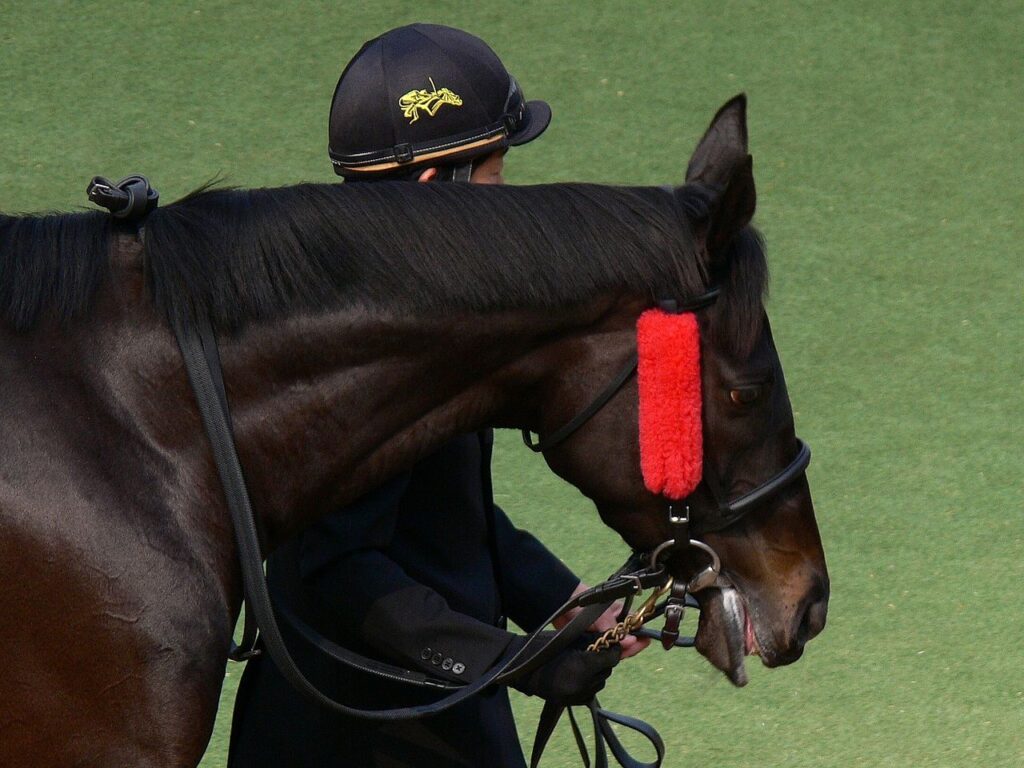
Assessing Your Horse’s Individual Needs
When selecting an eye covering for your horse, it is important to factor in their specific needs and requirements. Monitor your horse’s behavior while wearing the coverings (signs of discomfort or changes in performance should be taken into account) as well as assess symmetry between both eyes before making a decision. Taking these steps will ensure that you can choose an appropriate type of protection that helps keep them comfortable whilst protecting their sight if necessary.
Monitoring for Potential Issues
Horse owners should frequently inspect for any signs of pain, soreness, or injury in their horses when using eye coverings. Such indicators can be things such as fluid discharge from the eye, reddening and swelling around it, excessive blinking or tears streaming down the face along with reluctance to let someone check out their vision area. If you are worried about how your horse is feeling while wearing an eyepiece then get some advice from a professional or another equine-savvy individual on what could help alleviate discomfort quickly if necessary. By regularly checking up on this matter one can ensure that both safety and ease of mind come first for the creature they care so much about!
Summary
No matter if you’re a veteran horse owner or just getting started in the equestrian world, your horse’s comfort and safety should be the top priority. Eye coverings have been used to protect, focus, and soothe horses for centuries. With that knowledge, we can better provide care. This blog post has detailed several types of eye coverings while also taking into consideration essential things to keep in mind when using them on horses.
Frequently Asked Questions
Why do they completely cover horses’ eyes?
To protect horses’ eyes from being startled as well as to keep them safe from flies and other harmful bugs, fly masks are worn. These eyewear can offer UV protection and even be treated with bug repellents for extra precaution. The use of such protective gear helps guard against irritation that could otherwise arise when exposed to biting insects or bright light sources for horses.
Why can’t you look horses in the eye?
It is often mistakenly believed that horses are prey animals, thus making it wrong for one to look into their eyes. This misconception leads some inexperienced trainers to follow this unwritten rule. Staring directly at a horse’s face should not be avoided as many think.
What types of eye coverings are available for horses?
Fly masks, blinkers and other types of protection can be used to shield horses’ eyes from external elements. Such eye coverings offer a safe way for the animals to remain guarded against environmental factors while still allowing them sight freedom.
How do fly masks protect horses?
Fly masks are designed to shield horses from bothersome insects, debris, and sunlight. They fit snugly around the face of the horse while still allowing for visibility due to their partially transparent mesh construction. As such they can protect horses in various ways without impeding them visually.
What is the history of horse eye coverings?
The use of horse eye coverings for protection dates back to ancient times initially used during chariot racing and in warfare. Their long-standing history has seen the utilization of this protective measure become indispensable when it comes to equine safety.

